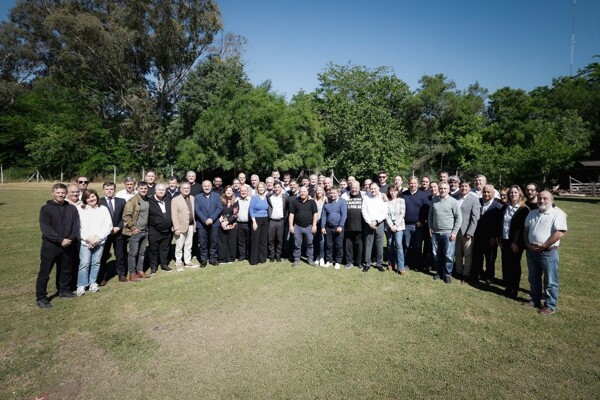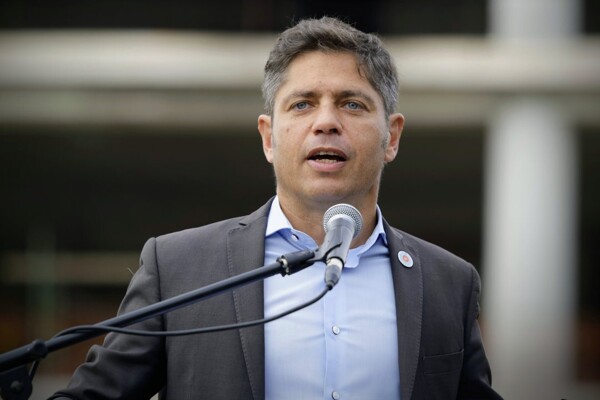
An anonymous intervention that put up new signs has sparked controversy with the act carried out on Monday, October 20th. On that day, the La Plata-Berisso-Ensenada Regional CGT baptized the street where its headquarters is located with the name of Rucci, an initiative that had been voted on in the La Plata Deliberative Council. That event, held in the middle of the electoral campaign, had been attended by Governor Axel Kicillof and the Mayor of La Plata, Julio Alak. This action by the CGT leadership was repudiated by human rights organizations and groups grouped in the La Plata, Berisso and Ensenada Multisectoral, which pointed out that the former UOM leader led “part of the thugs who murdered and persecuted activists” in the years leading up to the 1976 genocidal coup. According to the complaints from these organizations, Rucci's thugs are accused of being one of the participants in the Ezeiza massacre on June 20, 1973. Indeed, the link between the man honored by the CGT and the state-sponsored groups that killed a hundred activists in La Plata in the period before the last dictatorship is documented in the book by journalists Daniel Cecchini and Alberto Elizalde “The CNU. State terrorism before the Coup”. “His actions and link to these thugs have not only been confirmed by several investigations into the police groups of the time, but are also confirmed by Juan Manuel Abal Medina himself in his latest book, where he confirms that Rucci sent armed thugs to participate in the repression against the mobilization of revolutionary Peronism,” the Multisectoral stated in its communiqué. The name of the street and the debate on the union model Giving street 36 the name of a right-wing Peronist leader openly linked to illegal repression before the dictatorship, beyond the seriousness itself, also raises the figure of a sector of the union movement that, through its practice, was openly opposed to the base, anti-bureaucratic, and class-based union movement expressed by Agustín Tosco. The Luz y Fuerza labor leader was one of the exponents of base and revolutionary unionism, which expressed a position of class independence and was the antithesis of the bureaucratic verticalism of the CGT, proposing the development of a democratic exercise of permanent consultation with the bases. He was one of the leaders of the Cordobazo, the Coordinating Body of Unions in Struggle, and was imprisoned and persecuted for his militancy. Rucci, for his part, defended the traditional, vertical, and bureaucratic model as a form of union action, linked to all kinds of thugs who sought to eliminate any emergence of base militancy within the unions or expressions linked to the left or revolutionary Peronism. The signs read “Agustín Tosco Street” and have a QR code that directs to a YouTube link, precisely to the televised debate that this anti-bureaucratic Córdoba union leader from Luz y Fuerza and the former general secretary of the CGT, José Rucci, had on February 13, 1973. They are two new signs naming street 36 between 2 and 3 that surprised neighbors in the northern neighborhood of La Plata the day before yesterday. An anonymous intervention surprised everyone by changing the name that the central union had given it less than fifteen days ago as part of an event with Governor Axel Kicillof and Mayor Julio Alak. It promoted the Social Pact with the business sector, class conciliation, and aligned with the repression of the workers' movement that expressed an independent policy for the working class. The anonymous intervention that renames the street again brings the debate back within the union movement at a time when the national government is once again putting on the agenda an attempt at Labor Reform that seeks to deliver a blow to the working class based on a drastic and permanent modification of working conditions. This attempt to sweep away the rights of the working class takes advantage of the acute fragmentation of the class, with increasing levels of labor precariousness that for more than 25 years has not fallen below 30%, and poverty wages even in the formal sector of work, but which at the same time still maintains a level of de-unionization and collective organization that remains one of the highest in Latin America and the world. In this context, the debate will once again be installed in the union movement: there are sectors of the CGT, such as the one expressed by the General Secretary of the UOCRA and former civilian collaborator of the last dictatorship, Gerardo Martínez, who are ready to negotiate labor rights and agree with the government on regressive modifications in labor legislation; while there are unions, internal commissions, bodies of delegates who will not be willing to give up their labor rights and will propose an agenda for coordination and struggle to face a model that only seeks to benefit the most concentrated sector of capital, based on greater and permanent precariousness of the living conditions of the majorities.













